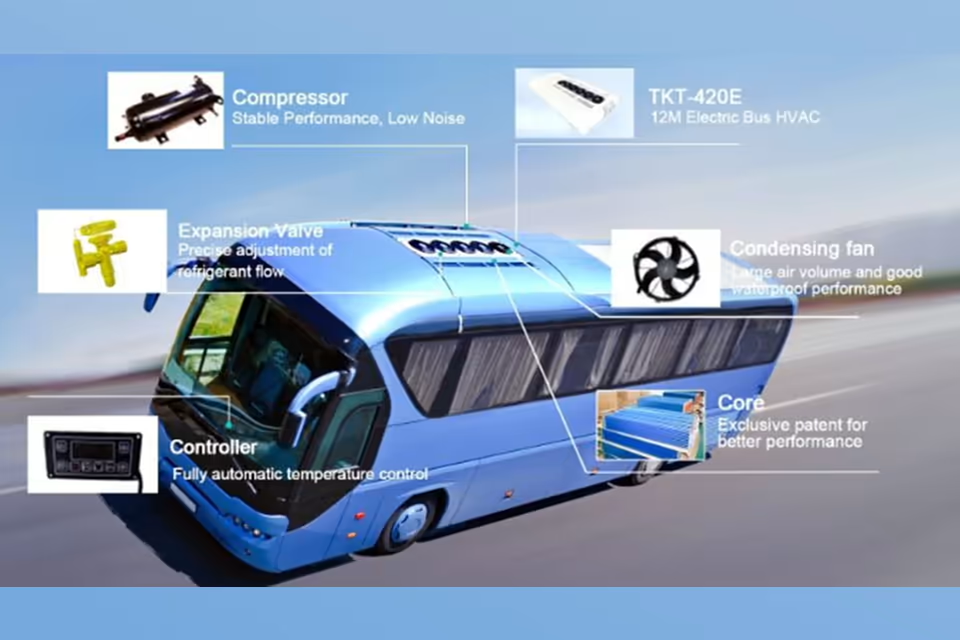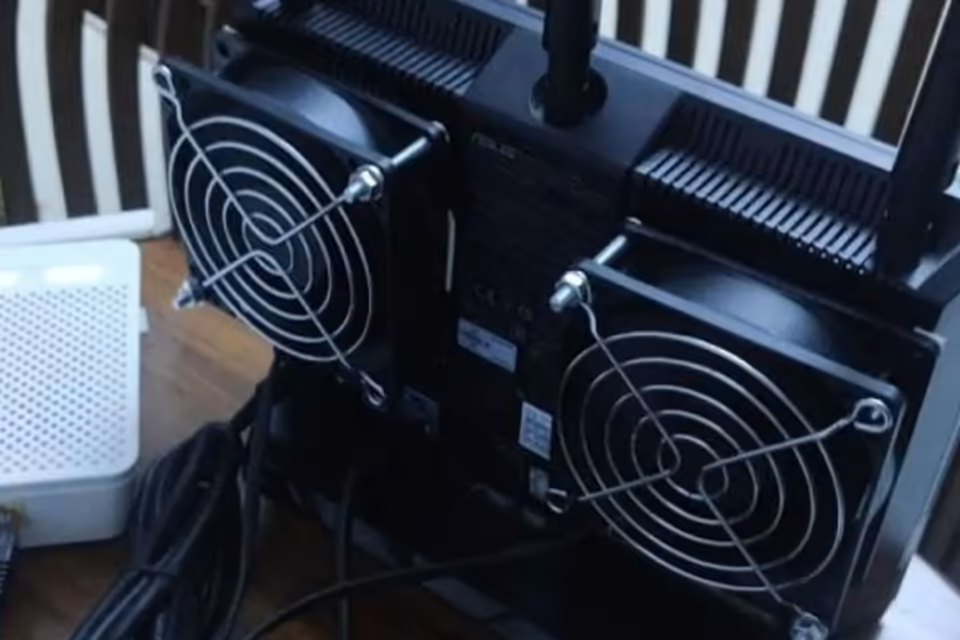Les distinctions entre les ventilateurs et les soufflantes sont cruciales pour les ingénieurs et les concepteurs de diverses industries, car chaque appareil remplit des fonctions uniques dans les systèmes de mouvement d'air et de ventilation. Les ventilateurs sont principalement utilisés pour la circulation générale de l'air, fournissant un flux d'air large et à basse pression adapté aux applications de refroidissement et d'extraction.
En revanche, les soufflantes génèrent des flux d'air à pression et vitesse plus élevées, ce qui les rend idéales pour des applications spécifiques comme la manutention de matériaux et le transport pneumatique. Comprendre ces différences est essentiel pour sélectionner l'appareil approprié afin d'assurer des performances optimales, une efficacité énergétique et une fiabilité opérationnelle dans une application donnée.
L'évolution de la technologie des ventilateurs et des soufflantes possède un riche contexte historique, commençant par des dispositifs rudimentaires de mouvement d'air dans les civilisations anciennes et progressant à travers la Révolution Industrielle, qui a considérablement augmenté la demande de solutions efficaces de circulation d'air.
L'introduction des ventilateurs électriques à la fin du 19e siècle a marqué un tournant décisif, menant à des avancées technologiques rapides au 20e siècle qui ont davantage différencié les ventilateurs des soufflantes en fonction de leur conception et de leurs caractéristiques opérationnelles. Cette progression a également inclus des innovations visant à améliorer l'efficacité, à réduire le bruit et à intégrer des technologies intelligentes, reflétant l'importance croissante de la durabilité et de la performance opérationnelle dans les pratiques d'ingénierie modernes.
Les différences opérationnelles entre les ventilateurs et les soufflantes sont souvent mises en évidence dans diverses applications, les ventilateurs fournissant généralement un flux d'air à basse pression, adapté aux environnements nécessitant un volume d'air substantiel. Inversement, les soufflantes excellent dans les situations exigeant un mouvement d'air à haute pression contre une résistance, comme dans les systèmes d'aspiration industriels ou les applications pneumatiques. Ces distinctions clés ont un impact non seulement sur les choix de conception, mais aussi sur la consommation d'énergie et les considérations de maintenance, ce qui rend vital pour les ingénieurs de comprendre les exigences spécifiques de leurs projets afin d'éviter les inefficacités et les coûts inutiles.
En plus de leurs différences fonctionnelles, les ventilateurs et les soufflantes ont également des implications sociales, en particulier dans les environnements de travail où la qualité de l'air et l'efficacité énergétique sont primordiales.
Alors que les industries priorisent de plus en plus des solutions de ventilation efficaces, l'adoption de technologies avancées de ventilateurs et de soufflantes contribue à l'amélioration de la santé publique, à la réduction de la consommation d'énergie et au respect des réglementations de sécurité. L'intégration de ces dispositifs répond non seulement aux besoins opérationnels immédiats, mais s'aligne également sur des objectifs environnementaux et économiques plus larges, façonnant un avenir plus durable pour divers secteurs.
Contexte Historique
L'évolution des ventilateurs et des soufflantes a une histoire riche qui remonte aux civilisations anciennes, où de simples dispositifs actionnés à la main étaient utilisés à des fins de refroidissement et de ventilation. Les premières formes de ventilateurs étaient construites à partir de matériaux naturels comme les plumes et les feuilles, jouant des rôles essentiels dans les sociétés primitives. Avec l'avènement de la Révolution Industrielle au 18e siècle, la demande de solutions de circulation d'air plus efficaces a fortement augmenté, entraînant des avancées significatives en matière de technologie et de conception.
Développements Précoces
Avant la Révolution Industrielle, les forgerons utilisaient des soufflets manuels pour améliorer le flux d'air nécessaire à leur travail, posant ainsi les principes fondamentaux qui inspireraient les innovations ultérieures en matière de technologie de mouvement d'air.
Les travaux scientifiques d'individus comme Robert Boyle sur le flux d'air et les vides ont également contribué à la compréhension de la manière dont l'air pouvait être manipulé pour diverses applications. À mesure que les industries se développaient, les ingénieurs ont commencé à développer des solutions à plus grande échelle pour répondre aux complexités croissantes de la ventilation et de la gestion du flux d'air dans les usines.
Mécanisation et Électrification
Les premiers ventilateurs industriels sont apparus au début du 19e siècle, principalement motivés par le besoin d'améliorer la ventilation dans les usines. Ces modèles initiaux étaient de conception simple et étaient soit actionnés manuellement, soit alimentés par des machines à vapeur.
The introduction of electricity in the 1880s marked a pivotal moment in the development of fan technology. The Schuyler Skaats Wheeler brothers invented the first electric fan in 1882, which represented a significant leap toward modern fan technology. As electrical infrastructure expanded, industrial fans became increasingly common in various sectors, including mining and commercial facilities.
Advancements in Technology
The 20th century saw rapid advancements in fan and blower technology, with innovations leading to the development of more efficient, quieter, and energy-saving designs. The differentiation between fans and blowers emerged, with fans primarily generating broad, low-force airflow, while blowers were designed for applications requiring higher pressure and velocity of air movement.
The introduction of smart technologies and IoT integration has further transformed the industry, creating opportunities for enhanced monitoring and control, as well as improving energy efficiency across applications.
Key Distinctions
When comparing fans and blowers, it is essential to understand their fundamental differences, including design, application, and performance characteristics.
Applications
The applications for fans and blowers also diverge significantly. Fans are typically utilized for general air circulation, cooling, and exhaust in various environments, while blowers are employed in applications requiring a pressurized air stream, such as material handling and pneumatic conveying.
This operational difference highlights the need for careful selection based on the specific requirements of the task at hand. Engineers should consider factors such as air flow rates, pressures, and the nature of the system when determining whether a fan or blower is more appropriate.
Design and Operation
Fans are primarily designed to move air at low pressures, typically generating a pressure increase of up to 0.5 inches of water gauge (in. wg). They are often used in applications requiring a significant volume of airflow but lower pressure, such as ventilation in buildings or cooling electronic equipment.
In contrast, blowers are engineered to produce a higher pressure, often exceeding 1.2 kilograms per square centimeter (kg/sq cm), making them suitable for applications that require moving air or gas against resistance, such as in pneumatic systems or industrial vacuum applications.
Efficiency and Performance
The efficiency of both fans and blowers is dictated by their design and intended use. Fans generally operate at a best efficiency point (BEP), where they can deliver the most effective performance concerning energy consumption and maintenance.
In contrast, blower performance is assessed over a range of operational parameters, including airflow rate and pressure developed. Blowers tend to achieve peak efficiency at higher pressures, which may not be relevant for fan applications.
This distinction is crucial for engineers to consider during the design and selection process, as selecting the wrong type can lead to increased energy costs and maintenance issues.
Types
Fans and blowers are classified based on their design, functionality, and application. Understanding the various types is crucial for selecting the appropriate device for specific needs in HVAC systems and other applications.
Fans
Centrifugal Fans
Centrifugal fans change the direction of airflow, utilizing a rotating impeller to increase the kinetic energy of air. They can be further classified into several subtypes, including radial, forward curved, backward curved, and airfoil types.
These fans are well-suited for high-temperature environments and can handle low to medium blade tip speeds while providing high pressure, making them effective in highly contaminated airstreams.
Axial Fans
Axial fans, in contrast, do not change the direction of airflow. Instead, they move air parallel to the fan’s axis. Subcategories include propeller fans, tube-axial fans, and vane-axial fans. Axial fans produce lower pressure than centrifugal fans and are typically employed in clean air, low-pressure, high-volume applications. Their design results in less rotating mass and greater compactness compared to centrifugal fans of similar capacity.
Blowers
Blowers are designed to increase the pressure of air or gas and are classified into two primary types: centrifugal blowers and positive displacement blowers.
Centrifugal Blowers
Centrifugal blowers function similarly to centrifugal fans but are optimized for generating higher pressure outputs. They can be single-stage or multi-stage, with single-stage blowers offering greater efficiency and multi-stage models providing a broader airflow range at steady pressure. Their design allows them to achieve high speeds, often exceeding 10,000 RPM.
Positive Displacement Blowers
Positive displacement blowers capture and compress air within their rotors, providing a consistent volume of air output even when system pressure varies. They operate at lower speeds than centrifugal blowers and are preferred in applications where high pressure is necessary, such as cleaning systems or when dealing with materials that may clog other types of blowers.
These blowers can also generate significant pressure, making them suitable for challenging applications.
Design Considerations
Selecting the appropriate fan or blower design is critical for achieving optimal performance in various applications. Several key factors influence the decision-making process for engineers.
Application Requirements
Understanding the specific cooling and airflow needs of the electronic device is paramount. This includes assessing the heat load and airflow requirements, which can vary significantly across different applications. In cases where the requirements are standard and the fan diameter is around 4 feet (1.2 meters) or less, a pre-engineered design may be suitable.
However, for more complex specifications or larger fans, engineers often resort to selecting an existing model configuration from the fan company’s catalogue, applying design rules to ensure desired performance and strength.
Fan Type Selection
The choice between axial and centrifugal fans largely depends on the intended application, available space, and thermal requirements. For instance, axial fans feature blades or airfoils attached to a hub, optimized for specific airflow needs, while centrifugal fans utilize backward-curved blades to achieve higher energy efficiency and lower noise levels. Engineers must evaluate these distinctions to determine the best fit for their system, taking into account performance capabilities, such as the peak horsepower ratings of specific models like the Z1000.
Efficiency and Noise Considerations
Fan efficiency is a critical factor that impacts energy consumption and operational costs. Efficient fans can significantly reduce energy expenses and heat production, which is vital for sustainability initiatives within the electronics sector.
Noise levels, measured in decibels (dB), also play a crucial role in applications where sound levels are critical. Optimizing devices for low noise ensures minimal disruption in sensitive environments, an aspect that is increasingly important in consumer electronics.
Regulatory Compliance
As the regulatory landscape evolves, engineers must remain vigilant in ensuring that their designs meet current standards while anticipating future changes.
Compliance challenges, such as those related to embedded fan redesigns, can impact cost-effectiveness and the decision-making process for engineers. Adherence to regulations not only influences design choices but also shapes the operational framework within which engineers operate.
Drive System Configuration
The choice of drive system, whether direct drive or belt drive, also affects the fan’s efficiency and operational flexibility. Direct drive systems offer simplicity and efficiency but are less flexible in speed adjustments compared to belt-driven systems. Understanding these dynamics helps engineers optimize overall system performance and reduce operational costs.

Maintenance and Troubleshooting
Importance of Regular Maintenance
Regular maintenance is crucial for ensuring optimal performance and longevity of fan and blower systems. Preventive maintenance strategies help in identifying and addressing potential issues before they escalate into costly failures. Key maintenance tasks include periodic inspections for dust accumulation, assessing bearing wear, and verifying the integrity of electrical connections.
Establishing a well-defined maintenance schedule, guided by manufacturer recommendations and operational experience, significantly reduces unscheduled downtime, which can be particularly costly in industrial settings.
Common Maintenance Practices
Essential maintenance practices for fans and blowers involve several key components:
- Periodic Inspections:Routine checks of all system components help in early detection of issues such as unusual noises or reduced airflow, which can indicate underlying problems.
- Lubrication:Proper lubrication of bearings and moving parts is vital to prevent wear and ensure smooth operation.
- Cleaning:Regular cleaning of components, including filters and ducts, is necessary to maintain efficiency and prevent overheating, which can be caused by dirty filters or clogs.
- Component Replacement:Timely replacement of worn-out parts, such as belts and bearings, helps maintain system integrity and performance.
By adhering to these practices, operators can enhance energy efficiency and extend the lifespan of their equipment.
Troubleshooting Techniques
Effective troubleshooting is essential for diagnosing and resolving issues that may arise in fan and blower operations.
- Identifying Leaks:System leaks, often found in flexible connections or areas subject to high vibration, can degrade performance. Visual inspections and temporary pressurization methods can help detect leaks.
- Assessing System Resistance:Factors such as fan configuration and operating conditions may cause issues like surging or stalling. Engineers must evaluate these aspects to ensure the system operates within optimal performance curves.
- Monitoring Vibration and Temperature:Utilizing vibration and temperature monitoring systems enables early detection of potential failures, allowing for timely interventions.
Understanding these maintenance and troubleshooting protocols enables engineers to optimize fan and blower system performance, thereby enhancing productivity and reducing operational costs.
Social Implications
The social implications of fan and blower technologies extend beyond their functional capabilities, influencing workplace environments, public health, and energy consumption practices.
As industrial facilities increasingly prioritize indoor air quality, the implementation of effective ventilation solutions such as industrial fans becomes critical for employee health and productivity. Proper air circulation mitigates the risks posed by airborne pollutants, especially during seasons when outdoor air quality may deteriorate due to wildfires or other environmental factors.
Moreover, adherence to safety regulations, such as those set by the Occupational Safety and Health Administration (OSHA), compels manufacturers to integrate industrial blowers that meet specific airflow purification standards. This compliance ensures safer working conditions and fosters a culture of health-conscious practices within industries.
In addition, the promotion of energy-efficient fan systems contributes to broader environmental and economic goals. The implementation of energy-saving technologies can significantly reduce operational costs for businesses, allowing for a more sustainable and economically viable production process. Consumers also benefit from initiatives like the Department of Energy’s (DOE) Fan Energy Rating (FER) standards, which are designed to promote energy efficiency in appliances, resulting in substantial savings on electricity bills while simultaneously contributing to environmental sustainability.
Finally, as companies adopt environmentally responsible practices, they create a ripple effect that influences the social fabric of communities. Enhanced air quality and energy efficiency foster healthier living and working conditions, thus contributing to a more sustainable future. The integration of fans and blowers into various sectors not only addresses immediate operational needs but also aligns with larger social and environmental goals, shaping a conscientious approach to industrial practices and public health considerations.













